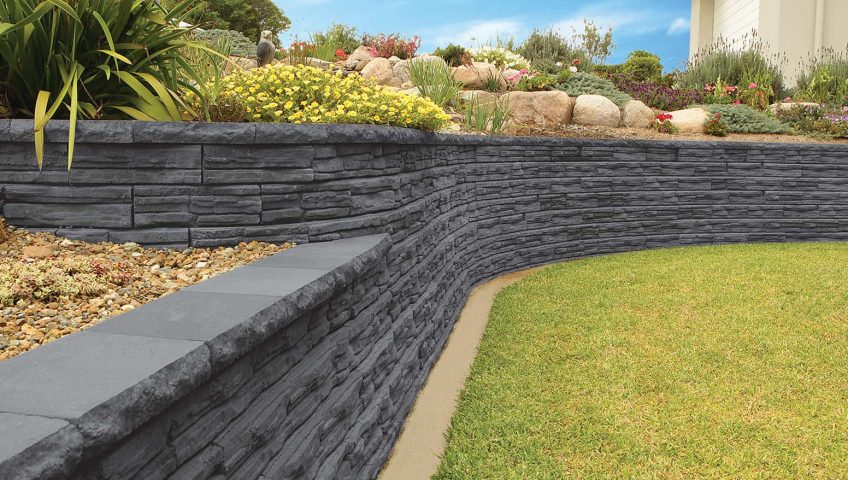Retaining walls are essential elements in landscaping and civil engineering projects in Sydney, especially where hilly terrain and sloping landscapes are common. These structures play a pivotal role in preventing soil erosion, managing water runoff, and creating level surfaces for various uses. The key decision in designing and constructing retaining walls in Sydney is height determination.
In this blog post, you will learn more about the retaining wall, emphasise the importance of selecting the ideal height, explore the wall’s purpose, discuss height-influencing factors, highlight common mistakes to avoid, touch upon maintenance considerations, and shed light on construction costs.
Definition of a Retaining Wall
A retaining wall structure holds back soil and prevents erosion. It is commonly used in landscapes with sloped terrains to create level surfaces for gardens, pathways, or buildings. Common materials used to create these walls include concrete, wood, or stone, and their design ensures stability and effectiveness in managing the forces exerted by soil.
Importance of Selecting the Ideal Height
Choosing the right height for a retaining wall is a critical decision that impacts the success and functionality of the structure. The ideal height is determined by a combination of factors, including the slope of the terrain, the type of soil, and the intended use of the retained area. An improper retaining wall design may lead to structural failures, soil erosion, and drainage issues, underscoring the importance of careful consideration in the planning phase.
Purpose of a Retaining Wall
Retaining walls serve a multifaceted purpose in landscaping and engineering projects. They provide structural support to keep soil in place and prevent erosion. These walls create usable, level spaces in areas with varying elevations, allowing for the development of gardens, patios, or other functional spaces. In Sydney, where heavy rainfall is expected, retaining walls also manage water runoff and prevent soil saturation.
Factors Influencing Retaining Wall Height
Several factors come into play when determining the height of a retaining wall:
- The Slope of the Terrain: The steepness of the slope significantly influences the height of the retaining wall needed to create a level surface. Steeper slopes require taller walls.
- Type of Soil: The type and composition of the soil impact its stability. Different soils exert varying pressures on the retaining wall, influencing the height and design requirements.
- Intended Use: The purpose for which the retained area will be used affects the height and design of the wall. For example, a wall supporting a garden may have different height requirements than one supporting a driveway.
- Drainage Requirements: Proper drainage is essential for the stability of a retaining wall. Adequate drainage for retaining walls must be incorporated into the design to prevent water buildup behind the wall, which could lead to instability.
Common Mistakes to Avoid
In the process of selecting the ideal height for a retaining wall, several common mistakes should be avoided:
- Ignoring Drainage: Inadequate drainage is a common oversight. Failing to account for proper drainage can lead to water buildup behind the wall, causing pressure and potential failure.
- Underestimating Soil Pressures: Each soil type exerts different pressures on a retaining wall. Underestimating these pressures can result in an insufficiently designed wall that may fail to withstand the encountered forces.
- Neglecting Professional Advice: Consulting with experienced retaining wall contractors and engineers is crucial. Neglecting professional advice can lead to suboptimal designs and costly mistakes during construction.
Maintenance Considerations
Proper maintenance is essential for the longevity and effectiveness of retaining walls. Regular inspections after heavy rainfall or severe weather events can help identify issues early on. Clearing debris, ensuring proper drainage, and promptly addressing any signs of erosion or instability are key components of retaining wall maintenance.
Construction Costs
The construction costs of retaining walls vary depending on factors like material choice, wall height, and site conditions. Concrete walls are more expensive upfront but may offer long-term durability and stability. Wooden walls, while more cost-effective initially, may require more frequent maintenance.
Conclusion
Understanding the purpose of designing a retaining wall, the characteristics of the terrain, and the drainage requirements are crucial steps in the planning process. By avoiding common mistakes, prioritising maintenance, and accounting for construction costs, you can ensure the success and longevity of your retaining wall project. Consulting with experienced retaining wall contractors, like Dr Garden, helps to achieve a well-designed and structurally sound retaining wall that not only meets your needs but also withstands the test of time. Contact 1300 374 273 for more information.

